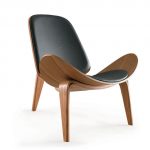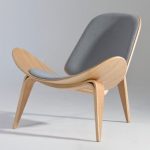As an Amazon Associate I earn from qualifying purchases.
Design has always been an integral aspect of furniture, shaping both its form and function. From the bold curves of the Art Nouveau movement to the sleek lines of mid-century modern design, the evolution of designer chairs is a fascinating journey through time.
One of the earliest examples of designer chairs can be traced back to the 19th century, with the emergence of the Arts and Crafts movement. This period was characterized by a focus on craftsmanship and handiwork, with designers like William Morris and Charles Rennie Mackintosh creating chairs that were not only functional but also beautiful works of art.
As the 20th century progressed, designers began to experiment with new materials and manufacturing techniques, leading to the birth of iconic chair designs such as the Wassily Chair by Marcel Breuer and the LC4 Chaise Lounge by Le Corbusier. These chairs pushed the boundaries of what was possible in terms of form and structure, while also prioritizing comfort and usability.
The mid-century modern movement of the 1950s and 1960s saw a shift towards minimalist and functional designs, with designers like Charles and Ray Eames, Hans Wegner, and Arne Jacobsen creating some of the most timeless and iconic chairs of the era. The Eames Lounge Chair and Ottoman, the Wishbone Chair, and the Egg Chair are just a few examples of chairs that have stood the test of time and remain popular to this day.
In more recent years, designers have continued to push the boundaries of chair design, experimenting with new materials, technologies, and forms. The result is a diverse range of chairs that cater to a wide variety of tastes and preferences, from the sleek and futuristic designs of Zaha Hadid to the more traditional and artisanal creations of designers like Sebastian Brajkovic.
The evolution of designer chairs is a testament to the enduring power of good design. From the ornate and decorative chairs of the past to the sleek and minimalist designs of today, each chair tells a story of the time and place in which it was created. As technology and materials continue to evolve, it will be exciting to see where the future of designer chairs will take us.
Amazon and the Amazon logo are trademarks of Amazon.com, Inc, or its affiliates.
 yonohomedesign.com Garden and Interior Design Ideas
yonohomedesign.com Garden and Interior Design Ideas

















